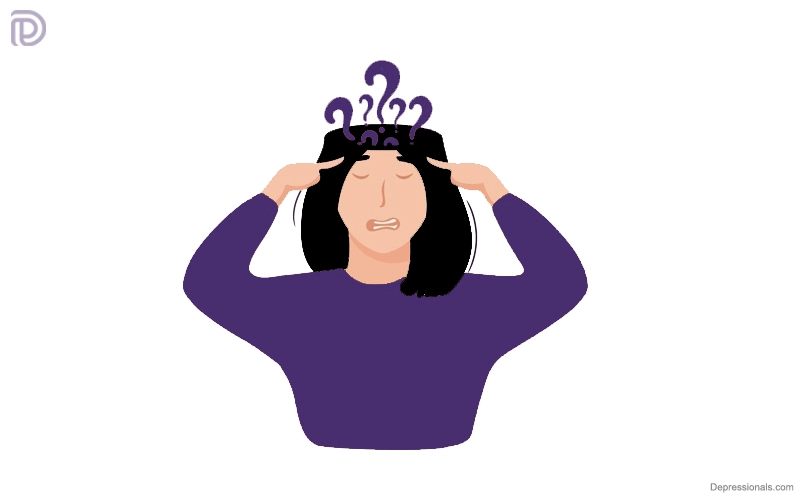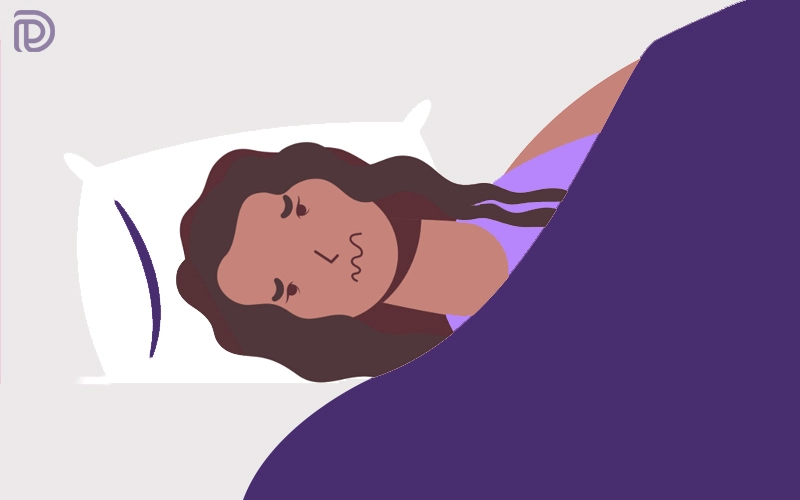Do you suffer from constant worries and anxious thoughts? Anxiety can be eased by following these tips.
What is too much worrying?
It is normal to have worries, anxieties and doubts in life. We worry about unpaid bills, upcoming job interviews, and first dates every now and then. But excessive worry is when it persists and becomes unmanageable. It’s impossible to stop worrying about “what ifs” and worst-case scenarios, which impede your daily life to a great extent.
You can suffer from emotional and physical problems if you are constantly worried, negative, and expect the worst. You may lose your enthusiasm, feel restless and jumpy, experience insomnia, headaches, stomach cramps and muscle tension, and have difficulty concentrating at work or school. If you feel depressed, you may take your negative feelings out on your loved ones, self-medicate with drugs or alcohol, or try to distract yourself by watching screens. There is also the possibility that constant worrying is a symptom of generalized anxiety disorder (GAD), characterized by nervousness, tension, and a general sense of uneasiness that colors your whole life.
If you are suffering from exaggerated worry and tension, you can do a number of things to calm your mind. It is possible to break the mental habit of chronic worrying. Taking a balanced, less fearful approach to life is possible if your brain is trained to remain calm.
Read: How to Deal with Social Anxiety
What makes it so difficult to stop worrying?
Worrying constantly can be draining. You may find yourself unable to sleep at night and can feel tense and edgy during the day. It’s still very difficult to stop being a nervous wreck even if you hate it. Almost all chronic worries have beliefs – both positive and negative – about worrying that fuels their anxious thoughts.
Worry beliefs that are negative
There may be times when you feel that your constant worries are harmful to your physical or mental health. Worrying can also make you feel like you have no control over it that it will overwhelm you and you’ll never be able to control it. In the same way that negative beliefs, or worrying that you’re worrying, increase anxiety and cause worry, positive beliefs can also create anxiety. That’s why you should stop worrying about anxious thoughts.
Read: Suicidal Thoughts
Worry beliefs that are positive
Worrying may help you avoid bad things, prevent problems, prepare you for the worst, or lead to solutions. Maybe you think that if you keep thinking about a problem for long enough, you’ll eventually be able to solve it? Alternatively, are you convinced that worrying is your only option to prevent overlooking something? If you feel that worrying helps you, breaking your worrying habit can be difficult. Realizing that worrying is your problem, not your solution, will help you regain control over your worried mind.
How to stop worrying

Tip 1: Create a daily “worry” period
Whenever you feel anxious and worried, it is hard to be productive at work, at school or at home. An effective strategy is to postpone worrying when faced with this situation. Allow yourself to have anxious thoughts rather than trying to stop or get rid of them. Don’t dwell on anxious thoughts, but allow yourself to experience them.
- Establish a time and place for worrying: This should be the same time each day (e.g. 5:30 to 5:20 p.m. in the living room) and not too early that it leaves you feeling anxious. If you’re worried about something, you can think about it and think about it. But the rest of the day is blissfully worry-free.
- Write down any worries you have: Make a short note of any anxiety you have during the day, and then go about your day. There is no need to worry about it right now since there will be time to think about it later. You can also lose the power of your worries by writing down your thoughts, whether on a notepad, your phone, or your computer.
- While you are worried, go through your “worry list”: Even if you have written the thoughts down, you should allow yourself to worry about them only for the amount of time you have specified. Taking this approach makes it easier to see your worries from a more balanced perspective. You can cut your worry period short when you no longer feel worries are important and continue enjoying your day.
Read: How to Get Over a Phobia
Tip 2: Challenge anxious thoughts
Chronic anxiety and worry can cause you to see the world differently, making it seem more threatening than it really is. Some of these behaviors include overestimating the likelihood that things will go badly, jumping to worst-case scenarios or treating anxieties as reality.
You may also doubt your ability to cope with life’s challenges, thinking that you’ll crumble at the first sign of difficulty. As an example of cognitive distortions, here are some examples:
- Think all or nothing. Seeing everything as black or white, with no middle ground. “If anything doesn’t go right, I’m a failure.”
- The overgeneralization of one negative experience. “I wasn’t hired for the job. There will never be a job for me.”
- Focus on the negatives and filter out the positives. Ignoring all the good things rather than focusing on what went wrong. “I answered the last question incorrectly. I’m a complete idiot.”
- Finding reasons why positive events don’t count. “My presentation went well, but it was pure dumb luck.”
- Making negative assumptions without any evidence to support them. It’s as if you have psychic powers: “I can sense she hates me.” Or as if you have prophetic powers: “I know something awful is about to happen.”
- Assuming the worst will happen. “The pilot said we would experience some turbulence. There’s going to be a crash!”
- Believing that your feelings reflect reality. “I feel so foolish. I must be making everyone laugh.”
- Setting rigid rules for you and punishing yourself for violating any of them. “I shouldn’t have tried to start a conversation with her. My brain is so stupid.”
- Mistaking your mistakes for shortcomings. “I deserve to be alone, I’m a failure, I’m boring.”
- Taking responsibility for circumstances beyond your control. “I am responsible for the accident my son was in. It would have been wise to warn him about driving in the rain.”
Read: How to Get Over a Phobia
Tip 3: Differentiate between solvable and unsolvable worries
Studies show that worrying causes you to feel less anxious for a short period of time. You feel that you’re accomplishing something by mentally running over the problem, so you are distracted from your emotions. Worrying and solving problems are two very different things.
Solving problems involves evaluating a situation, figuring out concrete steps to take, and then putting the plan into action. However, worrying rarely brings about a solution. If you dwell on worst-case scenarios for too long, you won’t be better prepared to deal with them when they come true.
Can you solve your worry?
Worries that you can act on right away are productive and solvable. In such a case, you may wish to call your creditors to find out if they have flexible payment options. Worries that are unproductive and unsolvable cannot be addressed. What if I get cancer one day?” or “What if my child gets into an accident?”
Start brainstorming if the worry is solvable
Try to think of how to stop worrying to get as many solutions as possible. Trying to find a perfect solution isn’t the best strategy. Think about what you can control rather than the circumstances or realities you cannot change. Decide what you’re going to do after evaluating your options. It’ll be much less stressful for you once you create a plan and take action.
Read: How to Overcome Fear
If the worry is not solvable, accept the uncertainty
You probably spend the vast majority of your time in this category if you’re a chronic worrier. Worry is often an attempt to predict what we expect from the future-a method of preventing unpleasant surprises.
There’s a problem, though. Life is not more predictable when you think of all the things that could go wrong. When you focus on worst-case scenarios, you will not be able to appreciate what you have in the present. Get rid of your need for immediate answers and certainty to stop worrying.
- Are you prone to predict bad things based only on uncertainty? Are they likely to do so?
- Can you live with the possibility of something bad happening, given the very low likelihood?
- You could ask your family and friends how they cope with uncertainty. Would you be able to do the same?
- Be aware of your emotions. Uncertainty is often used to avoid uncomfortable feelings. When you are in tune with your emotions, you can start accepting your feelings, even when they make no sense.
Read: How to Stop a Panic Attack
Tip 4: Interrupt the worry cycle
Worry can seem like endless loops of negative thoughts in your head if you worry excessively. If your anxiety is overpowering you, you may feel as if your life is spinning out of control, or you may be on the brink of burnout. It is possible to stop those anxious thoughts and take a break from persistent worrying right now.
It’s time to get up and move
An exercise routine is an effective anti-anxiety therapy since it releases endorphins that relieve tension, reduce stress, and boost energy. More importantly, if you keep your thoughts from constantly running through your head, you can be able to interrupt the constant flow of worries.
Consider listening to your feet hitting the ground while you are walking, running, or dancing, or your breath as you breathe or the sensation of the sun or wind on your skin.
Join a yoga or tai chi class
Yoga or tai chi helps to clear the mind by focusing on your movements and breathing, which helps you to become relaxed and calm.
Related: Anxiety Breathing Exercise
Meditate
You can use meditation to get your mind off your worries or remember your past by focusing on the present moment. Engaging in the present moment can help you interrupt a constant loop of negative thoughts. You don’t have to cross your legs, use incense or candles, or chant. The easiest way to start meditating is to go to a quiet place and use a smartphone app that will guide you through the process.
Relax your muscles in a progressive manner
Your mind can then turn away from your thoughts and instead focus on your body, thereby breaking the endless cycle of worry. Defying muscle tension in your body requires alternately tense and releasing different muscle groups. When your mind relaxes, so will your body.
Try deep breathing
Worry leads to anxiety and faster breathing, which increases anxiety further. But by going through deep breathing exercises, you can be calm and calm negative thoughts.
Relaxation techniques can alter the brain
Relaxation techniques such as those above may provide a quick respite from anxiety and worry, but practicing them regularly could also transform your brain. Studies show that meditation regularly can boost activity in the left prefrontal cortex, which is associated with feelings of serenity and joy. Practice will lead to greater anxiety relief and a greater feeling of control over anxious thoughts and worries as you gain confidence.
Read: How to Calm Anxiety Attacks
Tip 5: Talk about your worries
One of the most effective ways to calm your nervous system and diffuse anxiety is to speak face to face with a trusted friend or family member. This person should listen without judging, criticizing, or becoming distracted. Talking about your worries can help you feel less frightened when your worries spiral out of control. This is how you can stop worrying.
You can’t deal with your worries if you keep them hidden. It helps to explain what you’re feeling in an open way so that you can put things in perspective. You can expose unfounded fears as unfounded by verbalizing them. Furthermore, sharing your fears with someone else may yield solutions that you might not have thought of on your own.
Make sure your support system is strong
Humans are social creatures. We aren’t meant to live in isolation. However, a strong support system does not necessarily mean a large group of friends. Don’t underestimate the value of having a few trusted friends who are always there to help you. You can always find someone to confide in if you don’t have anyone to talk to.
If you’re anxious, know who to avoid
It’s possible that you acquired your anxious outlook on life during your childhood. You should not call your mother if she is a chronic worrier when you feel anxious, no matter how close you are. When choosing who to talk to about a problem, think about whether you tend to feel better or worse after speaking with that person. You can also join a support group to speak with people.
Read: Stress Management Techniques
Tip 6: Practice mindfulness
Worry focuses on either the future — what you may do about what may happen — or the past, repeating what has been done or said. Mindfulness is a centuries-old practice that can help you become more present by removing your focus from the past and future. Through this method, you can identify where your thinking is creating problems and connect with your emotions by observing your worries and then letting them go.
Observe and acknowledge your worries
You should not ignore them, fight them, or try to control them as you would typically do. Do not react or judge them, but rather observe them as if from an outsider’s perspective.
Let go of your worries
When you let anxious thoughts pass without trying to control them, they pass as quickly as cloud particles moving across a sky. The only time you get stuck is when you can’t stop worrying.
Stop worrying and do focus on the present
Feel your body, listen to your breathing, and pay attention to your constantly changing emotions and thoughts. Bring your attention back to the present moment if you find that you are stuck on a particular thought.
Repeat daily
The concept of staying focused on the present is simple, but it takes regular practice and time to reap the rewards. When you first start, you may notice that your thoughts keep returning to your worries. Do not become frustrated. You’ll reinforce a mental habit when you draw your attention back to the present, which will help you break free from the worry cycle.
Meditation for beginners
- Take a moment to relax
- Place your hands on the tops of your upper legs while you are sitting on a comfortable chair or cushion.
- Allow the air to enter your lower belly through your nose and close your eyes. Extend your abdomen as much as possible.
- Take a deep breath and exhale.
- Imagine yourself feeling the airflow into your nostrils and out of your mouth, or feeling your belly rise and fall with each inhalation and exhalation.
- Do not judge your thoughts if they start to wander. Instead, focus on your breathing.
- Spend 10 minutes meditating three or four times per week. Minutes matter.






I got what you intend, thanks for posting.Woh I am delighted to find this website through google.
Thank you for another informative site. The place else may just I get that kind of info written in such an ideal approach? I have a mission that I am simply now running on, and I have been on the look out for such info.